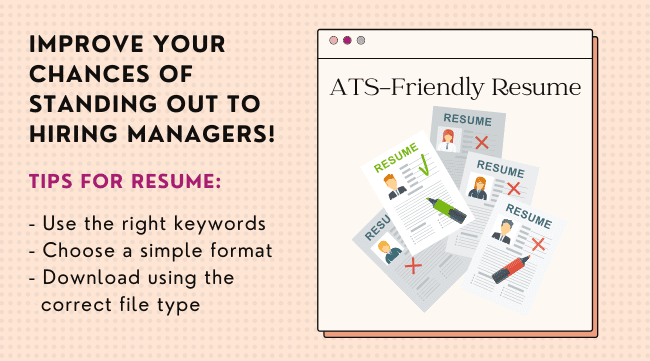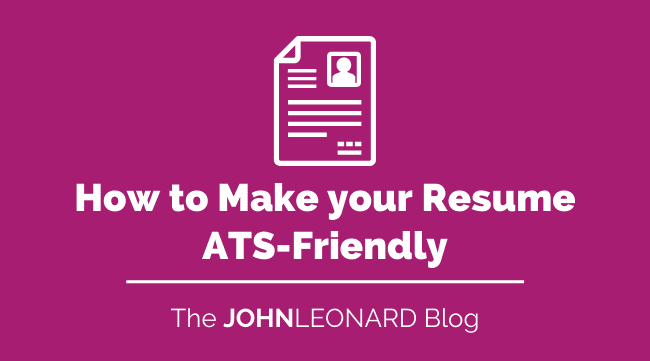Many employers today use applicant tracking systems (ATS) to help with their recruiting and hiring processes. These systems parse through thousands of resumes for selected keywords to save recruiters and hiring managers a lot of time by weeding out less ideal candidates for job postings. Making your resume ATS-friendly can greatly improve the chances that your resume will be seen by the hiring manager. Here are three tips to create a resume that is ATS-friendly.
Use the right keywords
Each job you apply for, it’s helpful to tailor your resume to that job description to increase the odds of being hired. Carefully look for words and skills that are repeated or specifically required in the job description. These are great keywords that you should add to your resume if you have experience in those areas. For example, if a specific software that you are experienced with is listed in the description, make sure you include it in your resume. If there’s anything listed in the job responsibilities that you already do in your current job or have done in a former job, add that to your resume as well.
You should also spell out any abbreviations and acronyms on your resume because the ATS may not have those shortenings as keywords, but some of the words of the spelled-out acronym could be keywords. Use this guide (with examples) to help you properly use abbreviations and acronyms on your resume.
Finally, looking through job descriptions of similar titles will give you a better sense of what the general keywords are for that specific role and function within a company.
Use a simple format
Unfortunately, ATS will not appreciate the fancy layouts that the human eyes do. So to make your resume ATS-friendly, stick to a simple layout. You should use standard section headings such as Summary, Education, Work Experience, and Skills because these headings will help ATS process the information on your resume more accurately. Avoid including headers and footers in your resume. Instead, just decrease the top and bottom margins and use that space for what you would’ve included in the header and footer. Do not use any graphics, tables, or charts either. The ATS may not be able to read them accurately or at all. You can save the fancier version of your resume with graphics and tables for the in-person interview when you know human eyes are looking at it.
Use the right file type
In general, you should always save and upload your resume as a PDF or DOCX. However, some ATS will not parse through PDF files accurately because of formatting, so make sure you follow instructions to ensure that the file type you are uploading is accepted. If the system doesn’t list PDF as an accepted format, do not use it.

Want more information that will help you to succeed in your career? Subscribe to our JOHNLEONARD blog below and receive the latest career advice!

